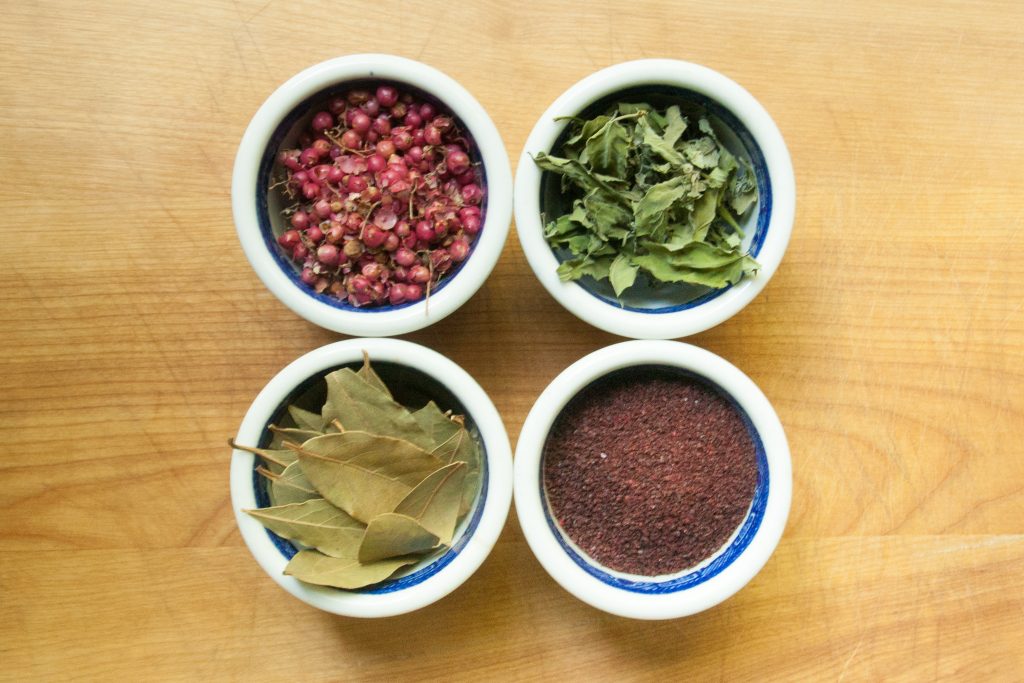
When it’s time for me to cook or bake something really special, I look through my foraged spice cabinet. I don’t do this for just anybody. Foraged herbs and spices take time and effort to gather, and I only use them when I’m cooking for someone I think will appreciate their specialness.
My favorite spices are foraged. Sure, I still love basil and vanilla, and I couldn’t do without salt (which I would forage for if I didn’t live in the desert). But foraged spices are unique. They bring the flavor of a particular place and time to your dish. These are unbuyable flavors.
The lemony sumac I use for my dry rub was harvested on a hot August day along a dry dirt road in rural Pennsylvania. The juniper berries were a bonus I found on my latest mushroom hunt in the Colorado Rockies. And the bee balm I use on my pizza (who needs oregano?) is from my sister’s garden in New Hampshire.
Here’s what you’ll find in my foraged spice cabinet. What’s in yours?

I just foraged some Staghorn Sumac for the first time and currently have the whole berry clusters drying. When I use them for a spice do I just take off the individual berries and use them as is or do I need to do something to them? What type of dish do you suggest to use Sumac in?
For some ideas on how I use sumac, see here: https://backyardforage.wpengine.com/sumac-a-necessary-spice/
As for how to use the spice, after you dry them, remove the individual fruits from the stem and give them a few pulses in a spice grinder, not to pulverize, just to break them up. Then rub them through a metal sieve and use the powder as a spice. You’ll be leaving the seeds (which can be bitter) behind.